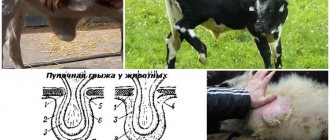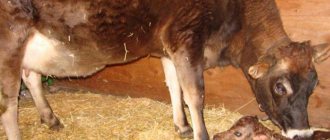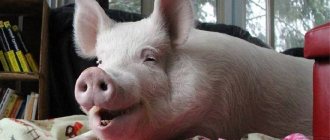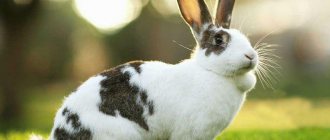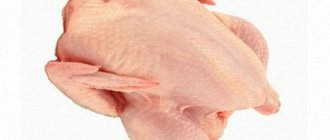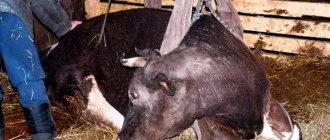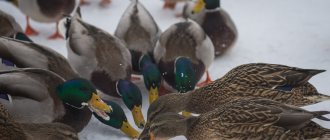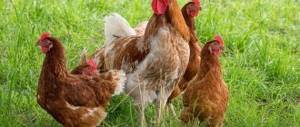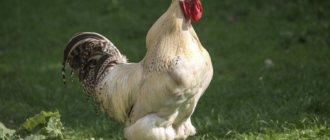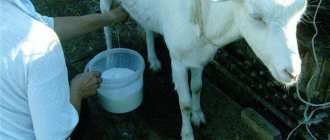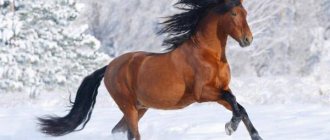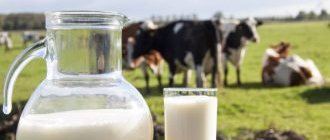Causes of current drooling
The cause of this unusual phenomenon may be some problems with the digestive tract or unfavorable processes in the body. To understand which of them has an effect, it is recommended to observe the cow and check for existing symptoms.
Veterinarians claim that the animal suffers from certain diseases, namely:
- stomatitis;
- poisoning;
- blockage of the esophagus;
- severe fermentation in the rumen, caused by overeating of certain feeds.
To determine the true cause of drooling, it is recommended to seek help from a specialist. The farmer can control the cow’s appetite and condition.
Stomatitis
This is an inflammatory process that, like in humans, manifests itself in the oral cavity. The reason for its appearance may be the consumption of food that is characterized by elevated temperatures. Often occurs due to injury from sharp plants, straw or certain types of cereals. Sometimes it is formed when consuming low-quality food - poisonous shrubs or herbs.
Poisoning
The reason for this phenomenon is the consumption of any toxic ingredients or low-quality food. The effect most often occurs on the gastrointestinal tract, but sometimes other body systems are affected.
Gastrointestinal tract of a cow
Among the most common methods of infection, veterinarians identify:
- Eating grass contaminated with chemicals after processing fields.
- Animals eating poisonous mushrooms, green potatoes or dangerous plants.
- The cow's consumption of low-quality feed.
- Ingestion of heavy metal salts into the digestive tract.
The more unfavorable substances there are in an animal’s body, the more difficult the poisoning process is. The rate of damage is determined by the amount and time of exposure.
Tympany of the rumen
The reason for this phenomenon is considered to be an excessive amount of gases that accumulate in the animal’s rumen. It can be traced in cows that feed on plants that are susceptible to easy fermentation. Often this is alfalfa, winter cereals or clover. Most often occurs after rain, when food gets wet. It often appears during the period of feeding ice cream, slightly rotten or compacted food. Rarely occurs after certain contagious diseases or intestinal blockage.
Qatar gastrointestinal tract
This is a disease that can manifest itself in chronic or acute form. There is a disorder in the functioning of the gastrointestinal tract due to the formation of a viscous substance on the mucous membrane. The disease may recur after complete recovery.
The reason for this process is related to improper feeding of the cow. This can include rare but satisfying meals or prolonged fasting. It also occurs when eating very coarse food or food that has long been spoiled. The disease develops among animals whose stalls are poorly looked after and not cleaned. The risk of developing the disease increases sharply with hypothermia or overheating.
Re-infection often occurs due to problems in the oral cavity, cardiac pathology or other problems with vital organs.
Disorder of the functioning of the gastrointestinal tract
Description and treatment of common diseases in calves
The difficulty of keeping cattle, especially young animals, is that animals often get sick. Some diseases are life-threatening to calves, while others cause them to be stunted in growth or development.
You need to know what diseases you will have to deal with in order to take preventive measures or start treatment on time. Sometimes the lives of his charges depend on the correct and quick actions of a farmer.
Let's look at the diseases that are most often encountered when raising calves.
Calves are susceptible to many diseases and the breeder needs to be able to recognize the symptoms.
White muscle disease
White muscle disease occurs in young animals under the age of 3 months. White muscle disease affects the body of calves: skeletal muscles and the heart suffer. More than half of sick animals die (60%).
Symptoms
White muscle disease can be acute, subacute and chronic. Acute lasts 7-10 days.
Symptoms:
- the eyes become cloudy and discharge is noticeable;
- there is nasal discharge;
- It’s hard for animals to move, they get tired quickly, so they prefer to lie down;
- they eat less and less, then refuse food;
- sometimes bloating, saliva flows;
- shortness of breath, arrhythmia.
Sometimes there are no symptoms and the calves appear healthy. In the acute form of the disease, calves die in 60-90% of cases. If the form of the disease is subacute, it lasts longer - 15-30 days, mortality - 40-60%. The symptoms are the same, but erased. Chronic white muscle disease lasts 50-60 days and kills 30-40% of calves.
With white muscle disease, the calf constantly lies down and does not get up for a long time
Treatment
White muscle disease is treated only in its early stages. If irreversible changes have occurred in the heart, nothing can be done; it no longer works as before. A sick calf is taken to a warm room and fed well.
They give vitamins. Selenium medications help. This is sodium selenite 0.1% solution - 0.1 -0.2 ml per 1 kg. Where to inject? The injection must be given intramuscularly or subcutaneously.
Sodium selenite is a poison, so follow precautions and dosage.
Vitamin E is prescribed - (3 times 10-20 mg) and other drugs. Your veterinarian will give you an exact list.
Hernia
In calves, umbilical hernia is not so common, but still occurs. A hernia is a disease when the peritoneum or abdominal organs protrude from the umbilical ring. A hernia can be congenital or acquired; it appears due to a fall of a calf or a blow to the belly with a hoof.
Bloating or tympany
If the calf has a swollen belly or a full stomach, this may be a symptom of tympany; the disease appears after 1.5 - 2 months. This is not a contagious disease, but dangerous for the animal, because without the help of a veterinarian it will die.
Often occurs after the calf has eaten succulent green food (clover, young grass, alfalfa, milky corn cobs, beet or cabbage leaves).
If the plants were covered with dew or water after rain, the risk increases. After such a meal, animals should not be given water. The stomach also becomes bloated after eating rotten root vegetables, frozen potatoes, etc. There are other causes of bloat in calves.
Avitaminosis
If an animal’s body lacks vitamins, it develops vitamin deficiency. Vitamin deficiency also happens because vitamins are poorly absorbed due to liver disease, and the stomach hurts. Most often, vitamin deficiency is a disease of young animals that develops in the spring, when there are almost no vitamins left in the feed.
Vitamin deficiency A
If calves do not receive enough carotene, which comes to them with mother's milk, they grow and develop poorly. They have vitamin deficiency A. The symptoms are as follows:
- not well-fed;
- their mucous membranes are pale;
- dry skin;
- the fur is tousled;
- the eyes are inflamed, vision is impaired;
- laryngitis, bronchitis, etc. appear.
To prevent vitamin deficiency, proper feeding and vitamin supplements (carrots, fish oil, etc.) are necessary. Treatment is the administration of vitamin A concentrate orally or intramuscularly - 50-100 thousand units, once a day for 3-5 days.
Carrots are an excellent prevention of vitamin deficiency
Vitamin deficiency D
Vitamin D deficiency also has another name – rickets. Occurs when there is a lack of vitamin D in feed. Vitamin D deficiency, symptoms:
- perverted appetite: calves drink urine, chew manure, swallow rags, skin;
- walk carefully, stop often, prefer to lie down;
- grow poorly, lose weight;
- their limbs become twisted;
- Hair falls out in places.
Treatment is to replenish vitamin D. To cure vitamin deficiency, give fish oil and bone meal. Natural or artificial ultraviolet irradiation helps. Medicines are also prescribed. There are also vitamin deficiencies B, C, etc.
Pasteurellosis
Pasteurellosis is an infectious disease that affects not only calves, but also other domestic animals and birds.
It is caused by pasteurella, which remains viable in manure or cold water for 2-3 weeks, and in frozen meat for up to a year.
Animals of any age get sick, but young animals are more susceptible. Pasteurellosis is transmitted from a sick animal through feces, urine, and nasal discharge.
A calf can contract pasteurellosis by eating contaminated grass.
Coccidiosis
Coccidiosis is a serious disease of cattle, which occurs due to parasites - Eimeria, settling in the intestinal cells. Adult animals become ill during the transition from confinement to grazing or vice versa. But young animals, calves aged 2 to 6 months, are susceptible.
Even if they recover, they remain spreaders of coccidiosis.
Lichen
Ringworm or trichoftia is a common disease in calves. Ringworm passes from animals to humans. You can notice the lichen immediately. The area affected by the fungus peels off, then hair falls out.
Symptoms appear after 5-7 days. Only a veterinarian should treat lichen, based on the degree and form of the disease. The wound is treated with an antiseptic.
Ringworm must be treated immediately, otherwise it will spread throughout the herd.
If an animal has lichen, it is isolated and the room is disinfected. Ringworm not only spoils the appearance of the animal, but also affects the growth and development of the calf.
Siphunculatosis
Siphunculatosis is lice in animals. Lice are widespread everywhere, transmitted from sick animals to healthy ones, as well as through bedding. Lice often appear in calves in winter, when many animals are kept in a small room.
How can you tell if calves have lice? Animals experience severe itching and scratch their skin. Blood comes out of the scratches and dries into a crust. Young animals grow poorly, dermatitis occurs, and hair falls out. Lice often collect on the animal's head, neck and tail.
If you examine the calf, you can see both lice and nits. Lice are killed with insecticides.
Source: //selomoe.ru/korovy-byki/bolezni-telyat-lechenie.html
Symptoms
The cow's condition and behavior does not change, but she becomes selective in choosing food, giving preference to soft food. Chewing takes longer than usual and is accompanied by minor breaks. Upon initial examination of the mucous membrane, there is visible swelling and dryness. At such moments, the animal notices an excessive secretion of saliva, which trails out of the mouth in long strings. There is often a stench. Such symptoms are characteristic of stomatitis.
Signs of poisoning can be the most common processes - vomiting, diarrhea, constipation, blood in the stool, arrhythmia, change in pupil size. The cow may not be eating well or may lose her appetite for food altogether.
Treatment
The treatment process is always prescribed exclusively by a veterinarian. Self-treatment can create a life-threatening situation for the animal.
In case of gastrointestinal catarrh, the source of the disease is eliminated, and the animal is prescribed a water diet with the use of C. The previous diet gradually returns.
When the rumen is tympany, a probe is inserted to get rid of gases. The treatment process involves an enema with some beneficial substances. It is important to eliminate the cause of the disease in time.
Poisoning is treated with adsorbents or taking an antidote. Laxatives or gastric lavage help. Intravenous injections of saline and glucose are given.
To treat stomatitis, the first step is to eliminate the cause of the damage. The cow is put on a special diet. The affected area is washed with a solution of soda or 2% sodium chloride.
Poisoning
This often happens to cows and bulls if they eat poor-quality food or poisonous herbs, a card turned green by the sun, or various mushrooms. If salts of heavy metals enter the body. Perhaps the herd was grazing nearby a field that was treated with pesticides. The organs of the gastrointestinal tract are affected first, followed by a reaction throughout the entire body. The more and longer the toxins poison the animal, the more severe the disease will be.
Depending on what the large-horned animals were poisoned with and how much of the toxin was taken, symptoms will begin to appear. The most obvious of them is the bull's profuse drooling. .
Vomiting, constipation or diarrhea, refusal to eat. It is necessary to pay attention to the stool; they usually contain mucus and blood particles. Nervous system disorders, restless or depressed state, mild tremors of the limbs. The size of the pupils changes, body temperature rises, breathing quickens, and arrhythmia begins.
Treatment should begin as early as possible; the longer you wait, the more toxins will be absorbed into the body. The animal is given an antidote, laxatives and absorbents (activated carbon or white clay). Perform gastric lavage with a weak solution of manganese and intravenous injection of saline solution with glucose.
Cow diseases and their symptoms, as well as methods of treatment
If an infection occurs, the animal owner will need to calm down and calm the cow, then hold her securely and begin treating the affected area of the body.
To do this, it is good to have on hand a first aid kit with important medications - potassium permanganate, iodine, boric acid, camphor oil, turpentine, as well as bandages, scissors, oilcloth, gauze, tourniquet, rubber bottle, thermometer, milk catheter.
The first group of diseases, which cow owners often encounter, can threaten both the health of other animals in the herd and the people themselves.
Such diseases of cows are characterized by rapid onset and development, they are poorly treated and arise due to infections entering the body, that is, microbes and viruses.
The real threat of all infectious diseases is that they can cause a lot of trouble for the cow owner and lead to the death of other animals in the herd.
Smallpox
This cow disease often affects young cows in the herd. It is characterized by the appearance of a rash on the udder. The incubation period is 4-8 days; later, due to an increase in temperature, the cow may develop a fever.
The animal eats poorly and produces little milk, which also becomes too liquid. Roseolas first appear on the skin of the udder, which then develop into papules, and then into pustules.
The contents of such rash blisters are transparent in the first days, then become purulent and in the second week of the development of the disease acquire a red-brown color.
Treatment with medications that veterinary medicine offers today consists of boron and zinc ointments. Protect existing pustules with cotton wool, which is moistened with collodion.
If the infection is difficult to cure, it is recommended to vaccinate the entire livestock with a special smallpox vaccine.
In order to prevent relapses, veterinarians advise keeping animals in comfortable conditions in clean and dry rooms, paying special attention to bedding.
Tuberculosis
The disease causes enormous damage to livestock production due to a decrease in the amount of milk and the delivery of cows for slaughter. Infection with tuberculosis most often occurs during the stall period.
The tuberculosis bacillus often enters the animal's body through the digestive tract and inhaled air. Tuberculosis can be benign or malignant. The incubation period lasts from two to six weeks.
There is an open form, in which the bacteria are released out with mucus, milk and feces, and a closed form, when the virus is isolated in a tuberculosis focus.
The disease manifests itself as a fairly high body temperature, a wet morning cough, shortness of breath, and wheezing. The cow loses weight catastrophically, and her skin becomes dry.
The lymph nodes enlarge, the esophagus is compressed, the udder becomes swollen and painful to the touch, diarrhea and nonspecific discharge from the uterus may begin. Sick individuals are subject to slaughter. In large farms, universal vaccination is carried out to prevent the disease.
Animals are tested for their reaction to tuberculin. It is important to comply with sanitary and hygienic standards for keeping cattle, as well as treat equipment with chlorine and other cleaning agents.
Non-contagious
Non-contagious infections are considered to be those that are not able to pass from one animal to another. They can be acquired or those that are inherited.
Pneumonia
The latent onset of the infection, in which four to 12 weeks can pass from infection to manifestation in the form of a cough, interferes with self-recognition of pneumonia.
The causes of the disease mainly in young animals are keeping animals on a cold and damp floor without bedding, colds, lack of walks in the fresh air, lack of vitamin A in feed. Trouble is manifested by cough, fever, temperature rise to 40 degrees and above, and diarrhea.
Treatment is prescribed exclusively by a specialist, but antibiotic therapy is most often used. As a preventative measure, it is recommended to feed calves colostrum, proper nutrition, ventilation of premises, and the use of a vaccine.
Traumatic reticulitis and pericarditis
A dangerous problem that can occur due to the ingestion of metallic foreign bodies along with food is called reticulitis.
There is an increase in temperature, a decrease in ruminal motility, lethargy of the animal, and its position in a position with the pelvic limbs brought under the stomach.
Surgical treatment is rarely available and effective; most cows die; only with early diagnosis is a favorable outcome possible. For prevention, it is recommended to clear the pasture area and feeding troughs of metal objects.
Pericarditis occurs as a purulent-putrefactive inflammation of the pericarditis due to its traumatic damage.
A sick animal rarely lies down, avoids sudden movements, groans when defecating and urinating, the pulse increases, and the jugular veins swell.
With early diagnosis, caffeine in combination with glucose is used to maintain heart function, and iodine and diuretics are used to absorb exudate. But most often the treatment does not produce results and the cow is sent to slaughter.
Stomatitis
During illness, the mucous membrane in the oral cavity becomes inflamed. A cow can get oral injuries from eating certain grains, dry straw or thorny plants. Also by eating hot food or poisonous vegetation.
Visible signs are almost invisible. The only thing that should alert you is that the cow begins to feed selectively, giving preference to softer food. The mucous membrane is swollen, bluish and dry. Viscous mucus will gradually accumulate, which will drip and be pulled from the mouth.
Treatment begins with a diet. It is necessary to limit all food that can cause injury. The best food during this period will be boiled vegetables, fresh silage and meadow hay with leaves. Rinse your mouth regularly with baking soda and a 2 percent sodium chloride solution.
Fermentation process or rumen tympany
A large amount of accumulated gases in the rumen of a cow or bull leads to bloating. Perhaps the animal had a hearty lunch after the rain or ate easily fermented food. Frozen and rotten food also causes disturbances in the digestive process. Bloating can occur after intestinal blockage or infectious diseases.
The symptoms of the disease are as follows: a very swollen abdomen, especially on the left side. If you palpate it, it will be tight and sound like a drum. The animal's breathing will become heavy and rapid. The cow's mouth will begin to drool or foam.
Treatment will consist of removing gases from the body as quickly as possible. Why is the cow's body placed in an almost vertical position so that its front part of the body rises above the back. Massage the abdomen in a circular motion and insert a gas probe into the mouth. If you need to inject medications - cryolin, ichthyol and tympanol.
The cow is foaming at the mouth (drooling): why, what to do
This pathological condition can have several causes. Let's look at each of them in more detail.
Causes. Inflammation of the oral mucosa can be caused by eating food that is too hot, as well as minor injuries caused by too rough and thorny plants. The cause of stomatitis can also be the consumption of certain poisonous plants by animals.
Symptoms The general condition of the animal remains unchanged. But it begins to sort out the food, diligently avoiding dry and hard ones, preferring softer ones. When examining the mucous membrane, its changes are visible - it becomes dry and swollen. As the disease progresses, the mucous membrane becomes covered with white foam, and the amount of saliva increases. The animal begins to constantly champ, its breath becomes foul.
Treatment and prevention. To avoid stomatitis, the diet of cows should completely exclude hard and thorny plants. Treatment consists of organizing dietary nutrition (boiled root vegetables, soft and thoroughly crushed green food).
Poisoning
Causes. Poisoning is caused by poor-quality feed and toxic substances. For example, pesticides used to treat fields, salts of heavy metals. An animal may eat a poisonous plant, mushroom or green potato.
Symptoms The cow begins to vomit and have diarrhea, and the functioning of the nervous system is disrupted. She becomes restless or, conversely, depressed. The animal exhibits profuse salivation, rapid breathing and dilated pupils.
Treatment and prevention. For the purpose of prevention, it is recommended to carefully approach the issue of the quality of food and places for pastures. It is best to start treatment immediately, before toxic substances spread throughout the body. In case of poisoning, the cow is prescribed absorbents, gastric lavage with potassium permanganate or tannin solution at the rate of 500–1000 ml per head.
Read also: Vaginal prolapse in cows: etiology, treatment, Veterinary Service of the Vladimir Region
Rumen tympany (bloating)
Causes. The reasons for the excessive accumulation of gases in the cow's rumen may be that the animal eats a large amount of easily fermented feed (winter crops, alfalfa or clover). This pathological condition is also promoted by feeding stale or frozen food. Rumen tympany can be a consequence of certain infectious diseases and intestinal blockage.
Symptoms The disease can have acute, foamy and chronic forms. When sick, the cow becomes restless, and the volume of her abdomen noticeably increases (especially on the left side). Percussion of the abdomen, profuse salivation, and shortness of breath are observed.
Treatment and prevention. To prevent the disease, it is necessary to eliminate all factors that cause it. Treatment of tympania involves the introduction of a special gas outlet probe and constant massage of the scar area. It is important to place the sick cow correctly - the front part of the body should be higher than the back. If the weight of the animal is small, then the front legs are raised to a vertical position.
Causes. The disease has primary and secondary forms. Primary catarrh can be caused by a disturbance in the animal's diet and occurs due to poor-quality food, starvation or overeating. The reason may also be a violation of the living conditions of the animals, especially non-compliance with the thermal regime. The secondary form of catarrh can occur due to inflammation of the teeth, as well as various diseases of the internal organs.
Symptoms With catarrh, the cow experiences decreased appetite, apathy and weakness. The animal's breath becomes foul, profuse salivation and diarrhea mixed with blood and mucus appear.
Treatment and prevention. To exclude disease, cows must be kept in conditions that comply with the recommendations. Feed for cows must be fresh and in sufficient quantity. Treatment of the disease involves complete abstinence from food and drinking plenty of fluids with the addition of castor oil (500–600 g for an adult animal, 50–100 g for young animals).
Esophageal blockage
Causes. Most often, this condition occurs as a result of eating large pieces of vegetables, root vegetables, and, less often, other objects. Sometimes the cause of blockage can be severe stress, but it must occur against the background of food (for example, spasm of the esophagus due to fear.
Symptoms The animal behaves restlessly, bloating and profuse salivation are observed. Characteristic signs of esophageal blockage are the absence of chewing gum and a thickening of the neck, which can be felt upon palpation.
Treatment and prevention. To avoid blockage, you should take a responsible approach to organizing the animal’s nutrition, avoiding feeding it too large root vegetables. Treatment consists of urgently pushing food into the stomach. To do this, use a hose to pour about a glass of vegetable oil into the cow.
